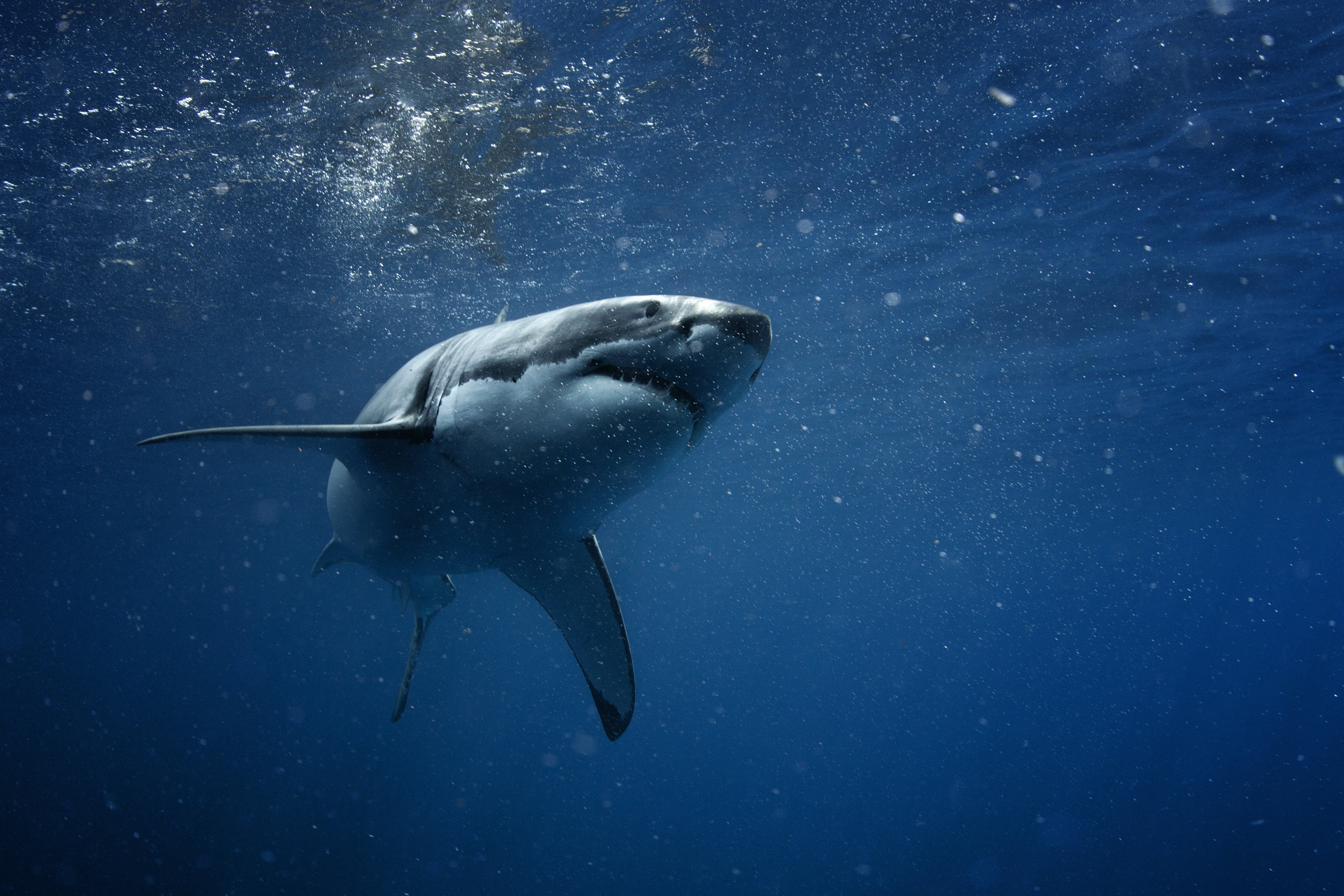Great White Shark
"Shark Luv" by Thierry Doizon (Digital)
“This sketch was also made for the animal charity exhibition at the Gnomon Gallery in collaboration with The Gnomon Workshop, Expedition Art and the California Wildlife Center. I both fear and admire sharks. Their variations, colors and shapes are amazing and very inspirational. Although they were a constant presence when we were swimming the waters of Madagascar where I grew up, I’ve never had the chance to meet a great white, yet.”
Your purchase is helping Expedition Art and Saving Species purchase land in Sumatra! Learn more about the project.
Habitat
Great white sharks live off of a wide stretch of coastlines, including those of North America, southern Africa, Australia, New Zealand, Japan, Chile and some parts of the Mediterranean. A particularly well-populated area of great whites is close to Dyer Island in South Africa. Great white sharks are very rarely found in either polar or tropical areas.
Family Life
Sharks are highly sensory animals and have a sense beyond that of the normal five: electroreception. They are able to smell blood in water from nearly three miles away. Offspring are born in groups of up to 12 but are not nurtured by their mother in any way. They are solitary creatures and fend for themselves, though they do occasionally engage in pack feeding during mating season.
Lifespan
Great white sharks have a life expectancy estimated to be 70 years or more, making them one of the longer living cartilaginous fish.
Hunting Habits/Diet
Great white sharks have a very impressive set of teeth, 5 rows deep with 46 individual teeth in each row. The only coast they are absent from is that of Antarctica, as the water is too cold. They are largely nocturnal hunters, active in the evening and night. In order to surprise their prey, they position themselves beneath it before a fast sprint to the surface of the water. They do not chew, but rather rip off large chunks of meat. After a decent sized kill, they can subsist without food for one or two months. They eat a large variety of prey, including sea lions, seals, some whales and birds.
Population
The population of great white sharks is currently unknown, though considered to be decreasing
Fun Fact
The great white shark has existed on Earth for nearly 400 million years. It is the largest known predatory fish. You don’t see these creatures in aquariums because captivity disorients them and they will refuse to eat. They are warm-blooded as opposed to most other sharks.
Why are they endangered?
The great white shark is particularly threatened due to unregulated trade, excessive hunting and accidental death due to fishing activities. They are often killed as trophies and are hunted for their fins and teeth. Commercial fishing practices can endanger great whites as they get caught in nets and meshes.
Status
Vulnerable


